40 allergens required on food labels
Packaging and labelling | Food Standards Agency The following information must appear by law on food labels and packaging: Name of the food. The name of the food must be clearly stated on the packaging and not be misleading. If there is a name prescribed in law this must be used. In the absence of a legal name, a customary name can be used. This might be a name that has become commonly ... Allergen Labelling Changes: Are your Labels updated ... - Food Safety Works Food allergen labeling has proven to be an effective way to prevent accidental access to potentially hazardous residues of the allergen. It is crucial for every food establishment to provide clear information about which allergenic ingredient is/are or may be present in the food product. ... The new requirements demands that allergen ...
Food labelling and allergens | AFSA The presence of common allergens in the product, or its packaging material, must be shown on the food label. If the food producer is unable to prevent allergen cross contamination in the manufacturing environment, they are required to place precautionary allergen labelling statements (may contain) on their products. In the case of uncommon ...

Allergens required on food labels
Allergen guidance for food businesses | Food Standards Agency 14 allergens. Food businesses need to tell customers if any food they provide contain any of the listed allergens as an ingredient. Consumers may be allergic or have intolerance to other ingredients, but only the 14 allergens are required to be declared as allergens by food law. Allergen declarations, warnings, and advisory statements on food labels ... The allergens that must be declared are: peanuts almonds Brazil nuts cashews hazelnuts macadamias pecans pine nuts pistachios walnuts crustacea molluscs fish milk egg gluten (that is found in wheat, rye, barley, oats, spelt, and triticale) wheat soy sesame lupin sulphites (must be listed if added at 10 (or more) milligrams per kilogram of food) Allergen labelling for food manufacturers 14 allergens If your product contains any of the main 14 allergens as an ingredient or processing aid, it must be included on the label. The 14 main allergens are: celery cereals containing gluten...
Allergens required on food labels. Food Allergies | FDA - U.S. Food and Drug Administration Jun 23, 2022 · People with food allergies should read labels and avoid the foods they are allergic to. The law requires that food labels identify the food source of all major food allergens used to make the food. Food Labels: Read It Before You Eat It! - American Academy of Allergy ... Ingredients of these most common eight allergens must be labeled with clearly recognized English names of the food source as listed above. The "contains" statement is "voluntary", but if used, must include ALL of the allergenic ingredients from the list of eight allergenic sources as described in item 14 of the 2006 guidance document. Food labelling and packaging: Ingredients list - GOV.UK Allergens. You must highlight allergens on the label using a different font, style or background colour. You must also list them in the ingredients. The allergens you need to highlight and list ... Allergen Labeling Requirements — FDA Reader Packaged foods for sale in the US which were labeled after January 1st, 2006 must have an allergen statement. This includes single-ingredient packaged foods (i.e. canned tuna) Fresh fruits and vegetables do not require an allergen statement.
Must allergens be declared on labels? - USDA Must allergens be declared on labels? Jul 17, 2019 Knowledge Article Yes. All food products containing two or more ingredients are required by federal regulations to bear an ingredients statement listing all ingredients by common or usual name in descending order of predominance. Food Allergen Labeling Law Requirements and Exceptions - Verywell Health Tree nuts (e.g., pecans and almonds) Peanuts Wheat, and Soybeans According to the FDA, these are the allergens that cause the most problems in the U.S. Foods that contain these allergens need to list them in the ingredients label on the package. In addition, manufacturers must use use the "common or usual name" of the allergen. How to Read a Food Label - FoodAllergy.org Starting Jan. 1, 2023, allergen labeling of sesame will be required under the Food Allergy Safety, Treatment, Education and Research (FASTER) Act of 2021. Ingredients and manufacturing processes can change without warning. Make a habit of carefully reading labels to ensure you avoid any potential allergens. "May Contain" Statements Food Labeling - FoodAllergy.org Food labels need to be accurate and truthful to help people with food allergies stay safe. Issues can arise when companies change the way they manufacture a food—or when they occasionally make mistakes. As of 2016, the U.S. Food and Drug Administration (FDA) has the authority to initiate allergen-related recalls.
How to read food labels | healthdirect Sugar: Sugar is a type of carbohydrate. It is better to choose healthier carbohydrates and to limit foods that are high in added sugars. Fibre: High fibre foods such as wholegrain bread and cereals improve digestion and help you to feel full. Sodium: This tells you how much salt the product contains. Eating too much salt is linked to high blood pressure and can lead to heart disease, … FAQ About the Food Allergen Labeling Consumer Protection Act The Food Allergen Labeling and Consumer Protection Act (FALCPA) became law in 2004. This law ensures that there would be clearer labeling of food for the millions of people with food allergies. FALCPA went into effect on January 01, 2006. FALCPA updates the labeling requirements for all food products regulated by the FDA. Allergen labelling | Food Standards Agency Labelling and allergens In Wales and Northern Ireland, we are responsible for the policy on food labelling and food compositional standards which are safety and non-safety related. In Northern... Food Labeling & Nutrition | FDA Food labeling is required for most prepared foods, such as breads, cereals, canned and frozen foods, snacks, desserts, drinks, etc. Nutrition labeling for raw produce (fruits and vegetables) and...
Tree Nut - FoodAllergy.org 05.09.2017 · Tree nuts are one of the eight major allergens that must be listed in plain language on packaged foods sold in the U.S., as required by federal law, either within the ingredient list or in a separate “Contains” statement on the package. For tree nuts, the specific variety must also be identified on the package. This makes it easy to see if tree nuts are present in a food item.
Food Allergen Labelling - Canada.ca Based on consultations with stakeholders, including allergy associations and the medical community, Health Canada developed amendments to the Regulations to enhance labelling requirements for specific priority allergens, gluten sources and added sulphites in prepackaged foods sold in Canada.
The 14 Food Allergens | Complete List & Symptoms | Free Allergen Poster Sesame seeds. Sulphur dioxide. Soya. Food businesses in the UK have been required since December 2014 to be aware of 14 prescribed allergens in their food. These are 14 different allergens that need to be pointed out to all customers so that someone with an allergy can make an informed choice of what they can eat.
Food Allergy & Anaphylaxis | Food Labeling | Food Labels The Food Allergen Labeling and Consumer Protection Act of 2004 requires that foods containing major food allergens be listed in plain English in the ingredient list, in parentheses within the ingredient list, or after the word "contains.". It does not require companies to declare that something "may" or "might" contain, or is ...
Allergens: Where Food Safety and Labeling Intersect In passing FALCPA, Congress noted that eight major foods or food groups—milk, eggs, fish, crustacean shellfish, tree nuts, peanuts, wheat, and soybeans—account for 90 percent of food allergies. These findings also cited a 1999 FDA review of randomly selected baked goods, ice cream, and candy showing that 25 percent of the sampled foods ...
Food Labelling for the Food Allergic Consumer | FARRP | Nebraska This means that a food ingredient which can cause a reaction in food hypersensitive consumers may be in a food without being declared on the ingredients label. To help ensure this does not happen, the Food Allergen Labelling and Consumer Protection Act (FALCPA) was passed in the U.S. in 2004. This Act requires the presence of the eight major ...
Understanding the FDA Food Allergen Labeling Requirements - enKo Products Are We Required to List Allergens on Our Food Labels? Yes, manufacturers need to declare the presence of allergens in their product if it has any. It is required by law under the Food Allergen Labeling and Consumer Protection Act, which is simply known as "FALCPA." Food allergies occur when some types of food trigger an immune reaction.
Food allergy and intolerance | Food Standards Agency If you have a food allergy or intolerance, it is important that you have the information you need to make safe food choices. If you are eating out, or preparing your own food, there are allergen labelling and information laws that require food businesses to provide you with information about what is in your food.. If you feel ill or have an allergic reaction after eating you should seek ...
Food Labelling | Allergy UK | National Charity This legislation has been in place since December, 2014 and mandates that ingredient lists on food labels have to clearly highlight (for example in bold type) that they contain any of the 14 allergens which include: Celery Cereals including gluten Crustaceans Eggs Fish Lupin Milk (Cows) Molluscs Mustard Nuts Peanuts Sesame seeds Soya
Food Allergen Labeling and Consumer Protection Act of 2004 07.03.2022 · (b) Effect on Other Authority.--The amendments made by this section that require a label or labeling for major food allergens do not alter the authority of the Secretary of Health and Human ...
Regulations to enhance the labelling of food allergens, gluten and ... Although standardized alcoholic beverages such as beer and wine are not required to have a list of ingredients, if wine or other standardized alcoholic beverages, (except standardized beer) contain a food allergen, gluten source or added sulphites (at 10 ppm or more) then the food allergen, gluten source or sulphites will need to be declared on any part of the label using either …
Allergen Labeling on Food Products - Mississippi State University The Food Allergen Labeling and Consumer Protection Act (FALCPA), which took effect on January 1, 2006, requires food manufacturers to use common names to identify major allergens. Allergen declaration is required on products regulated by the Food and Drug Administration (FDA), U.S. Department of Agriculture (USDA), and state regulatory authorities (e.g., Mississippi Department
TTBGov - Allergen Labeling consistent with the provisions of the food allergen labeling and consumer protection act of 2004, falcpa, the interim rule defines a "major food allergen" to mean any of the following: milk, egg, fish (for example, bass, flounder, or cod), crustacean shellfish (for example, crab, lobster, or shrimp), tree nuts (for example, almonds, pecans, or …
The Big 8 Food Allergens - The Food Institute 09.05.2020 · Soybean is another difficult food for the allergic consumer to avoid as it is used in many processed foods. Allergen Labeling. The Big 8 allergens must be declared on any processed food in accordance to the Food Allergen Labeling and Consumer Protection Act. Allergic consumers may accidentally encounter problem foods, as previously mentioned ...
Allergen labelling - Food Standards In February 2021, new plain English allergen labelling requirements were introduced for how certain foods known to be common allergens are declared. These changes will mean food allergen information is clearer and easier to find on food labels. Food businesses have three years to update their labels to meet the new requirements.
Food Allergies | Food Safety and Inspection Service A food allergy is a potentially serious response to consuming certain foods or food additives. For those who are sensitive, a reaction can occur within minutes or hours, and symptoms can range from mild to life threatening. The eight leading causes of food allergies are milk, eggs, fish, shellfish, tree nuts, peanuts, wheat, and soybeans.
Food Allergen Labeling And Consumer Protection Act of 2004 ... FALCPA requires that food manufacturers label food products that contain ingredients, including a flavoring, coloring, or incidental additive that are, or contain, a major food allergen using ...
Allergen labelling for food manufacturers 14 allergens If your product contains any of the main 14 allergens as an ingredient or processing aid, it must be included on the label. The 14 main allergens are: celery cereals containing gluten...
Allergen declarations, warnings, and advisory statements on food labels ... The allergens that must be declared are: peanuts almonds Brazil nuts cashews hazelnuts macadamias pecans pine nuts pistachios walnuts crustacea molluscs fish milk egg gluten (that is found in wheat, rye, barley, oats, spelt, and triticale) wheat soy sesame lupin sulphites (must be listed if added at 10 (or more) milligrams per kilogram of food)
Allergen guidance for food businesses | Food Standards Agency 14 allergens. Food businesses need to tell customers if any food they provide contain any of the listed allergens as an ingredient. Consumers may be allergic or have intolerance to other ingredients, but only the 14 allergens are required to be declared as allergens by food law.



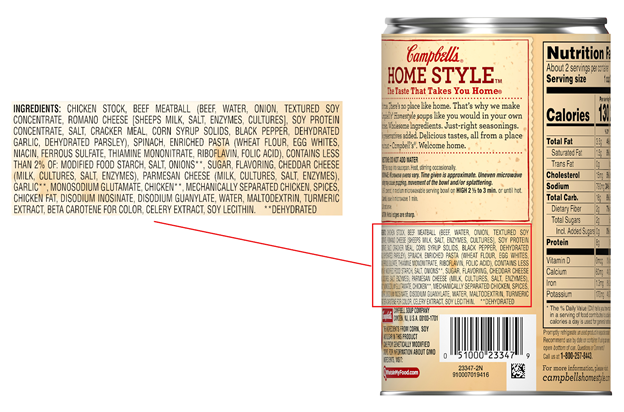

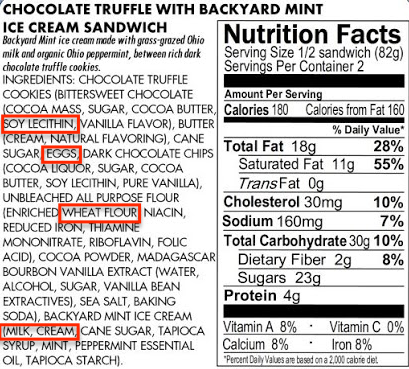


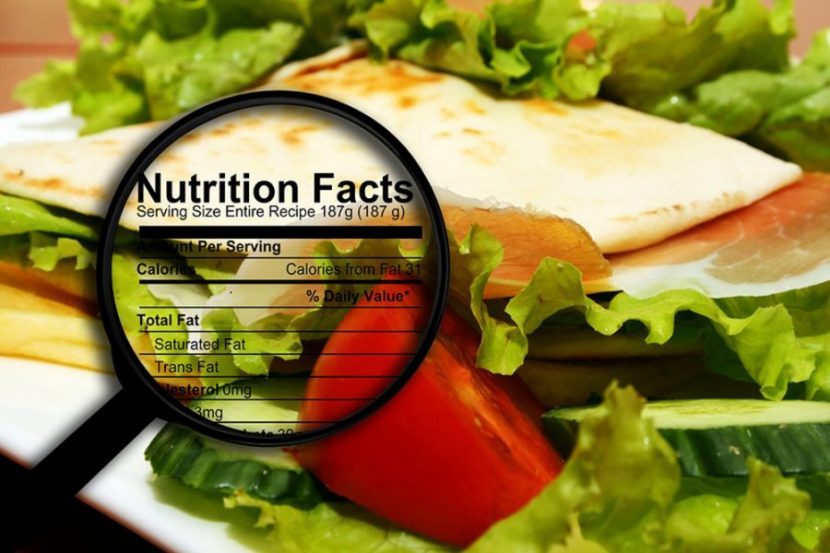




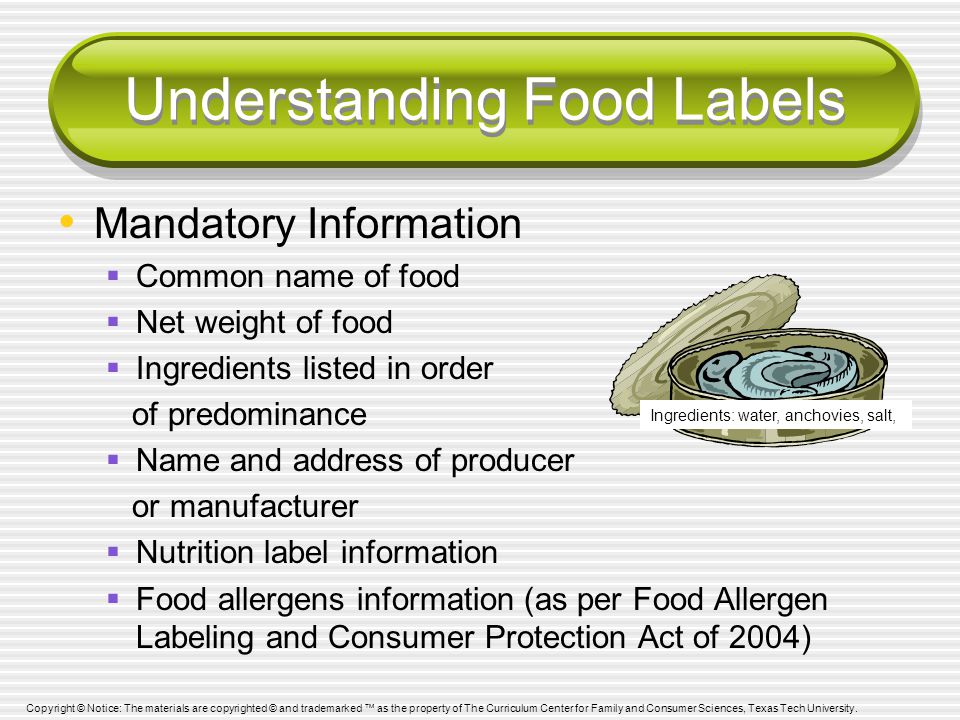
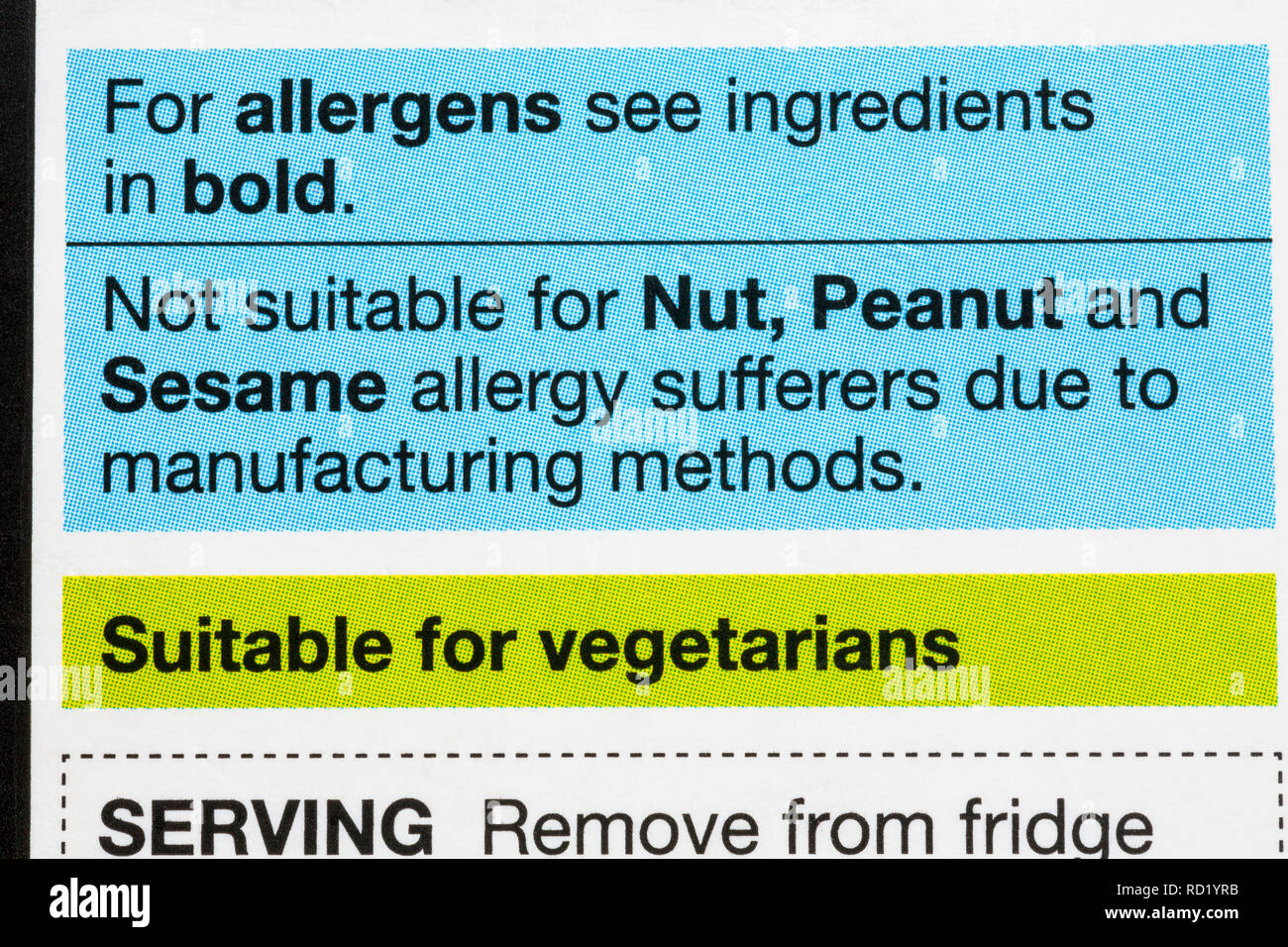
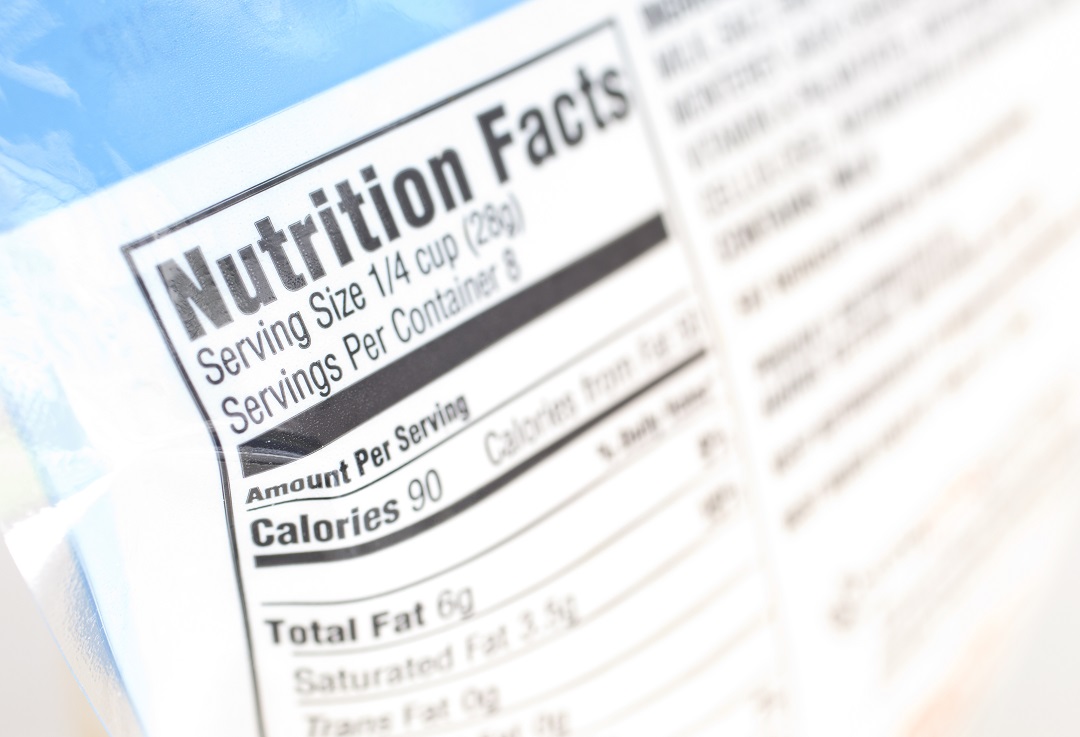

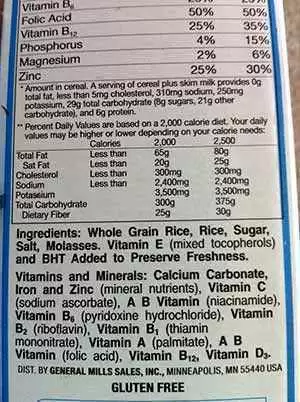




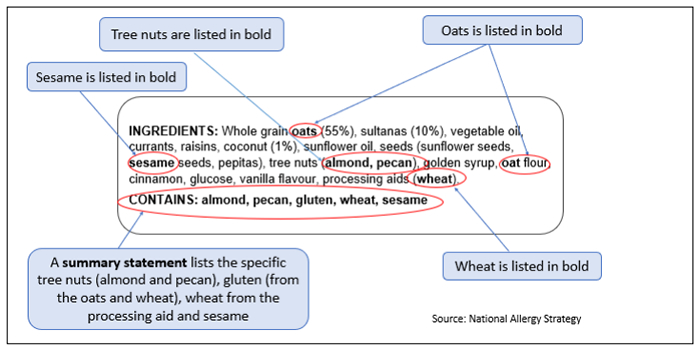








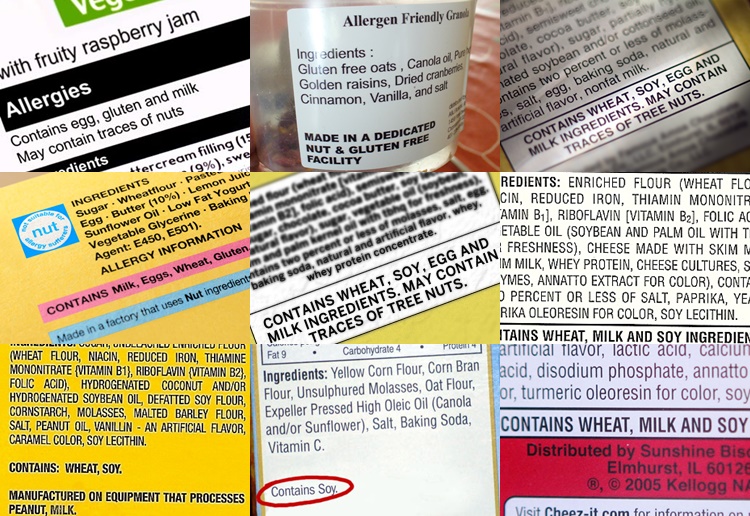


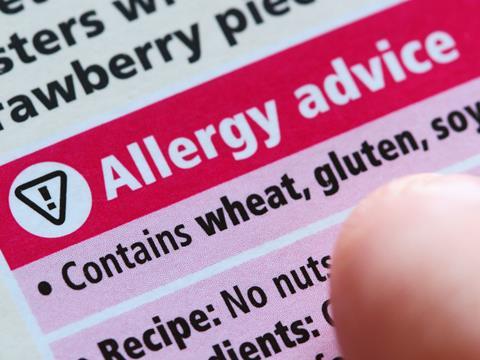
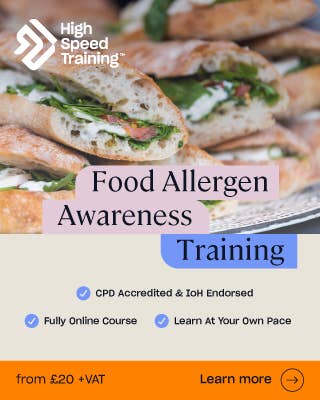
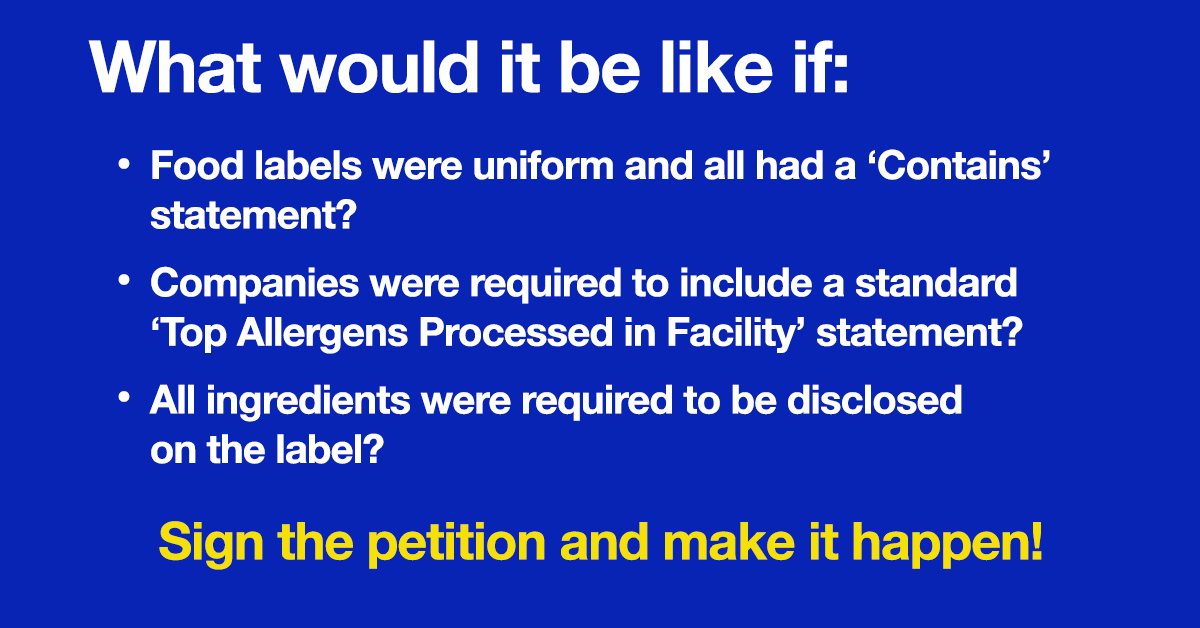
Post a Comment for "40 allergens required on food labels"